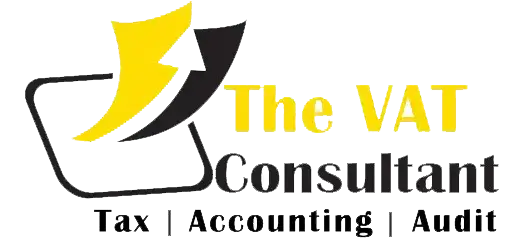In order to compute the Corporate Tax liabilities for a Taxable Person’s first Tax Period, it is necessary for Taxable Persons to have both an opening and a closing balance sheet. The opening balance sheet for the first Tax Period should be the closing balance sheet on the last day of the Person’s Financial Year that ends immediately before its first Tax Period commences.241
If no accounts were prepared for the previous Financial Year, a closing balance sheet will have to be prepared under an appropriate accounting standard, as applicable and regardless of whether the Cash Basis of Accounting or Accrual Basis of Accounting is applied.
Ministerial Decision No. 120 of 2023 includes certain adjustments a Taxable Person may make (by way of an election) in relation to intangible assets, Immovable Property, and Financial Assets and Financial Liabilities owned by the Taxable Person before it becomes subject to Corporate Tax. 242 These elections must be made on the submission of the Taxable Person’s first Tax Return, and are deemed irrevocable except under exceptional circumstances that require FTA approval.243
In relation to Immovable Property, if Immovable Property owned by the Taxable Person prior to the Taxable Person’s first Tax Period is recorded on a historical cost
basis in the Financial Statements, the Taxable Person can elect in its first Tax Period to adjust its Taxable Income in calculating the gain on the disposal of any Immovable Property in order that only gains accruing while within the scope of Corporate Tax will be taxed. The Taxable Person can select whether they use a ‘time apportionment method’ or a ‘valuation method’ when determining the amount of the gain that shall be excluded.244
The ‘valuation method’ allows the Taxable Person to exclude the amount of the gain that would have arisen at the start of their first Tax Period had the Immovable Property been disposed of at Market Value and the cost of the Immovable Property was the higher of the original cost and the net book value.245 This would require the Taxable Person to determine the Market Value of the Immovable Property at the start of their first Tax Period on the basis as set out in Ministerial Decision No. 120 of 2023.
Alternatively, the Taxable Person could choose to use the ‘time apportionment method’ to exclude the amount of the gain that would have arisen at the start of their first Tax Period.246 This allows the Taxable Person to exclude a proportion of the total gain in accordance with the proportion of time the Immovable Property was owned prior to the start of the Taxable Person’s first Tax Period and the time of disposal of the Immovable Property.
For intangible assets, any apportionment must be on the basis of time apportionment; 247 while for Financial Assets and Financial Liabilities, any apportionment must be on the basis of valuations at the start of the period where the assets came within the scope of Corporate Tax.248
For further details on these transitional rules, readers are advised to consult Ministerial Decision No. 120 of 2023 on the Adjustments Under the Transitional Rules.
Electing for small business relief
Mr X operates a Business in Abu Dhabi. He is a Resident Person for Corporate Tax Purposes. His Tax Period ends on 31 December each year. To date, Mr X’s Revenue has never exceeded the small business relief threshold of AED 3,000,000 per Tax Period in any Tax Period. In the most recent Tax Period ending 31 December 2025, Mr X derived Revenue of AED 2,000,000.
Mr X is eligible to benefit from small business relief as his Revenue for the 31 December 2025 Tax Period does not exceed AED 3,000,000, which is also the case for previous years’ Tax Periods. In order to benefit from the relief, he must make an election in his Tax Return.
Mr X will be treated as having no Taxable Income for the 31 December 2025 Tax Period. This means that he will not have to calculate his Taxable Income, and will have no Corporate Tax liability in the Tax Period.
Carried forward unutilised Tax Losses when electing for small business relief
C LLC is a UAE Resident company. In the Tax Period ending 31 December 2025, C LLC’s Revenue was AED 1,700,000. At the beginning of the Tax Period, C LLC had unutilised Tax Losses of AED 400,000. In the prior year, C LLC’s Revenue did not exceed the AED 3,000,000 relief threshold.
C LLC elects for small business relief for the Tax Period ending 31 December 2025. C LLC’s carried forward Tax Losses cannot be used in this Tax Period, but can be carried forward and used in future Tax Periods in which the small business relief is not elected provided the relevant conditions are met.
In the Tax Period ending 31 December 2026, C LLC sold a factory to B LLC for AED 5 million, resulting in its Revenue exceeding the AED 3 million (per Tax Period) small business relief eligibility threshold. In this case, C LLC will not be eligible for small business relief for the Tax Period Ending 31 December 2026.
C LLC will need to determine its Taxable Income for the 31 December 2026 Tax Period. To the extent C LLC has a positive Taxable Income, it is able to utilise its Tax Losses
of AED 400,000 brought forward from the prior Tax Period, subject to the 75% utilisation restriction. Should there be any remaining Taxable Income following the utilisation of the available Tax Losses, any Taxable Income exceeding AED 375,000 will be taxable at 9%.
+9 71 4 393 1773
info@thevatconsultant.com
https://thevatconsultant.com





























